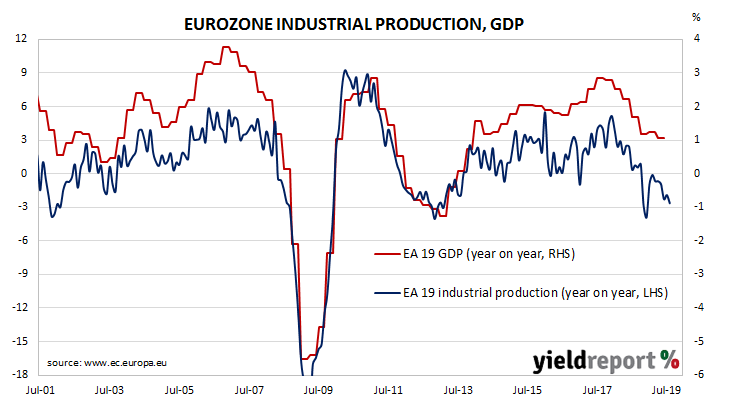As with other countries’ measures of industrial production, Eurostat’s industrial production index measures the output and activity of industrial sectors, except in its case, it does so with countries in the European Union. Following a recession in 2009/2010 and the resultant European debt-crisis of 2010-2012, euro-zone industrial production began to recover until a peak was reached four years later in early-2016. Growth rates then slowed through the rest of 2016, accelerated during 2017 and then began a steady slowing which has lasted through to mid-2019.
According to the latest figures released by Eurostat, euro-zone industrial production increased by a seasonally-adjusted 0.4% in August, higher than the 0.3% increase which had been expected and a reversal of July’s -0.4%. However, on an annual basis, seasonally-adjusted growth in industrial production slowed even further from July’s revised rate of -1.9% to -2.6*% in August.
The main drivers of the euro-zone, France and Germany, posted very different results for the month. Industrial production in Germany expanded by +0.6% while it contracted by 0.8% in France. In Spain and Italy the comparable figures were +1.1% and +0.3% respectively.

